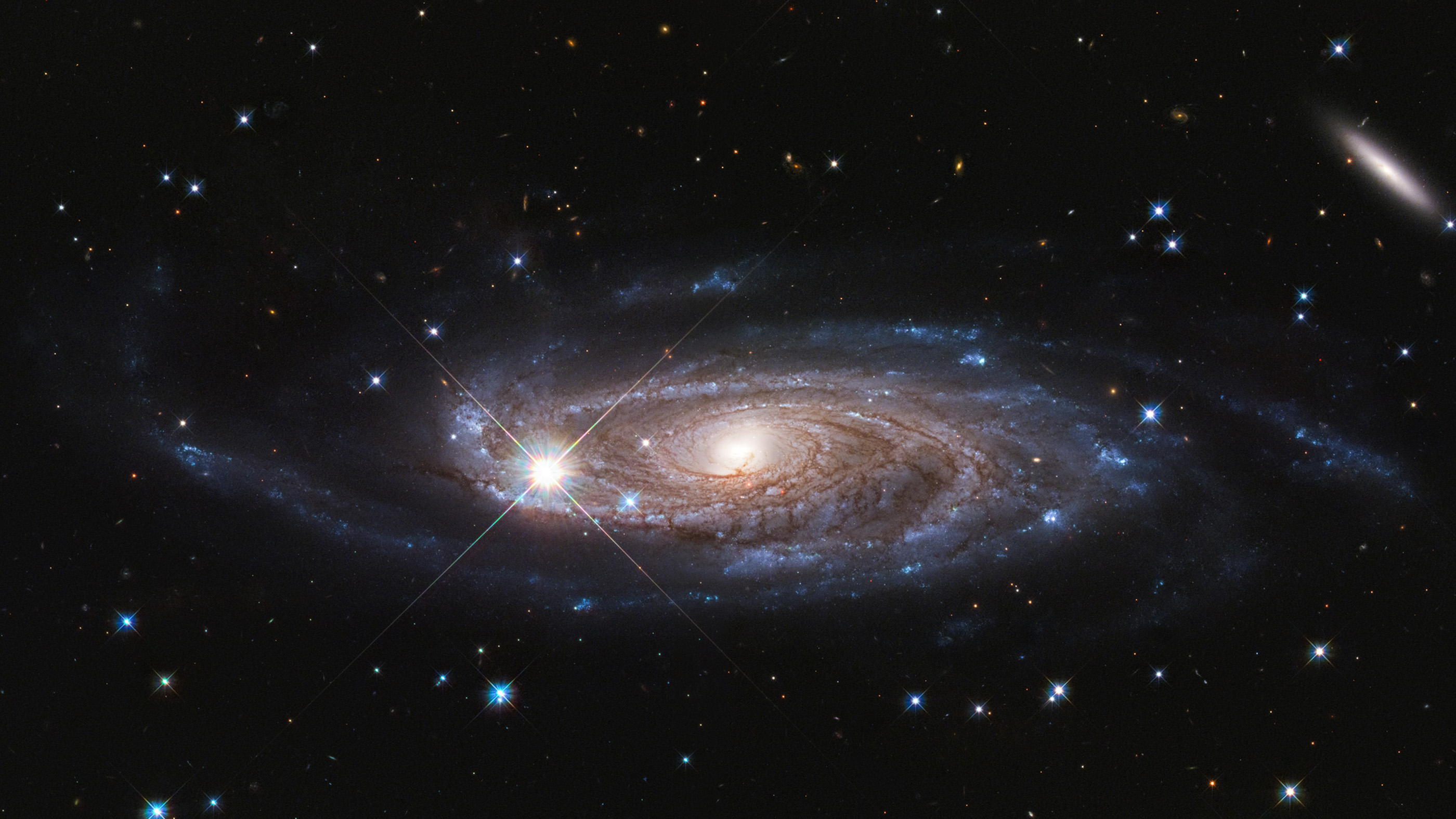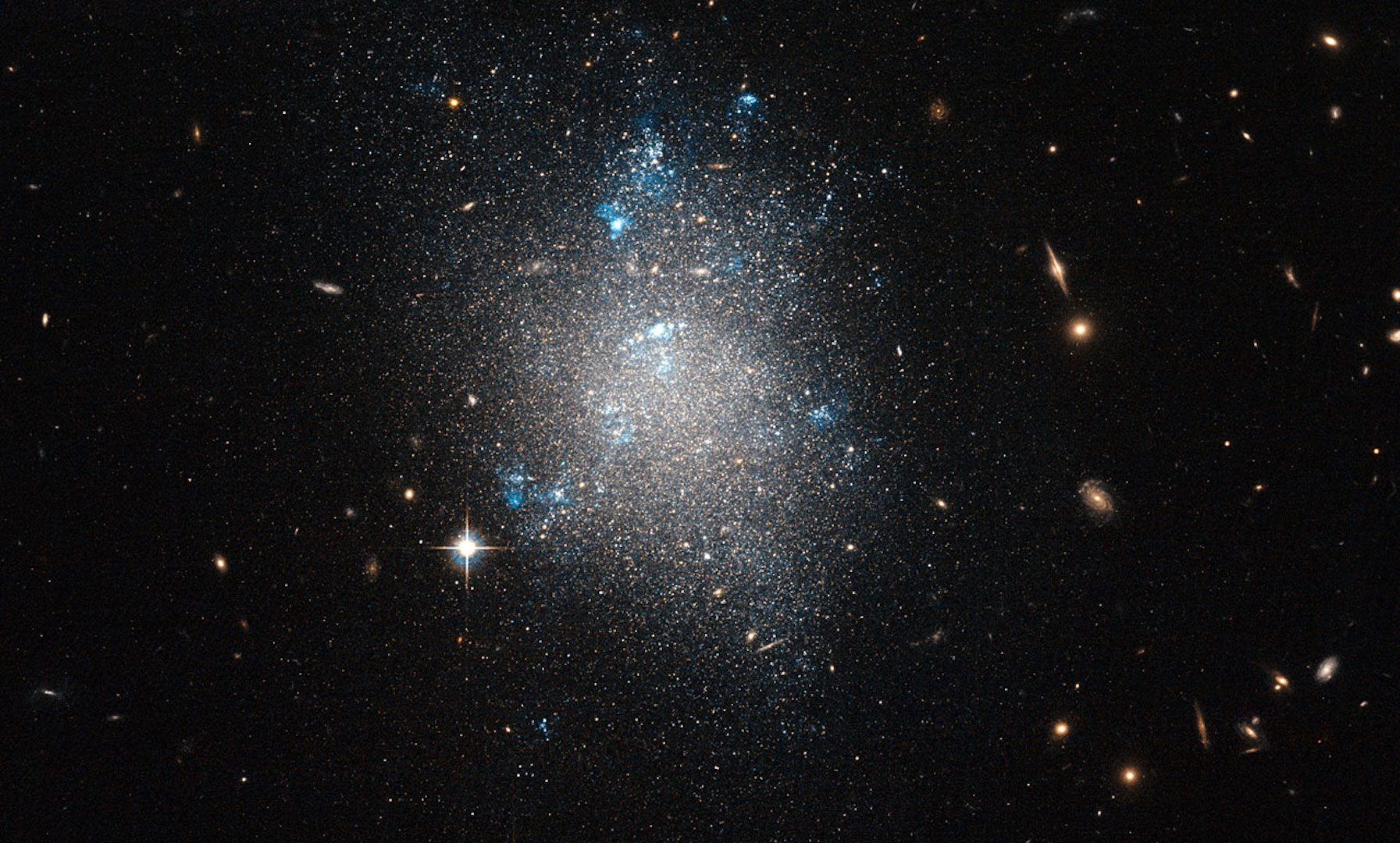What is a galaxy?
Galaxies take on many different shapes and forms throughout the cosmos.

Galaxies are groups of stars and other space objects held together by gravity. There are more than 100 billion galaxies in the universe, each presenting beautiful structures that can be seen in telescope images taken of the distant universe.
"At the most basic level, you can think of a galaxy as a collection of stars, gas and dark matter that is all gravitationally bound to each other," said Jenna Samuel, a doctoral candidate in astrophysics at the University of California, Davis. "What we picture as a typical galaxy is mostly the bright part — the stars — that's embedded in a much larger dark matter halo, which extends much further out."
The different parts of a galaxy are constantly interacting with each other to give a galaxy its form, Samuel told Live Science. The dark matter provides most of the mass, holding everything together using gravity. But stars also shape a galaxy — their heat blows around gas and dust, and when stars die in spectacular supernovas, they scatter material near and far.
"A galaxy is really an evolving unit of all those components," Samuel said.
Related: The 15 weirdest galaxies in our universe
Earth and our solar system are in the Milky Way, a large spiral galaxy containing between 100 billion and 400 billion stars. These appear as a bright band across the night sky that looks like spilled milk, so the ancient Romans called it the Via Lactea, which is Latin for Milky Way.
Almost every known galaxy has a supermassive black hole in its center, which also plays a part in determining the galaxy's characteristics. When the black hole is feeding on surrounding gas and dust, the gravitational beast consumes so much material that it can choke off star formation, Samuel said. The gas and dust that would typically go into making stars instead falls into the supermassive black hole's maw.
Enormous jets of energy often shoot out from actively feeding supermassive black holes, Samuel added. These jets can heat up surrounding material, which also prevents the material from collapsing down to form new stars.
The supermassive black hole in the center of our Milky Way galaxy isn't particularly active at the moment. "It's in a chilling phase right now," Samuel said.
What are some of the different types of galaxies?
The Milky Way is a spiral galaxy, which means it's flat, large and has several arms that spiral around a central bulge, Samuel said.
Spiral galaxies form stars at a moderate rate and typically have a mass similar to the Milky Way. When including all the stars, gas, dust and dark matter, a spiral galaxy is around 1 trillion times the mass of the sun, Samuel said.
Some of Samuel's favorite galaxies, which she studies as part of her research, are dwarf galaxies. These are much less massive than spiral galaxies and lack their ordered structure. "They're kind of irregularly shaped — they appear like spherical blobs," Samuel said.
Related: Why are galaxies different shapes?
Most dwarf galaxies orbit larger galaxies the size of the Milky Way. Many dwarf galaxies are bursting with star formation, Samuel said. They are generally between 10 million and 1 billion times the mass of the sun, according to the Swinburne University of Technology in Melbourne, Australia.
Massive elliptical galaxies are another type of galaxy, which are much larger than the Milky Way. "They look somewhat spherical, kind of egg-shaped," Samuel said. "Their stars are going to be older, and the galaxy will have stopped forming new stars a long time ago." Elliptical galaxies are heavyweights, often clocking in at 100 trillion or even 1 quadrillion times the sun's mass, she said.

Which galaxies are closest to us?
One of the closest known galaxies to the Milky Way is a small companion that orbits it called Sagittarius, Samuel said. Sagittarius is a dwarf irregular galaxy, and is located about 70,000 light-years away from the Earth, according to NASA.
"Sagittarius is so close to the Milky Way that it's in the process of being disrupted and merging with it," Samuel said, meaning that the awesome gravity of our galaxy is ripping apart the smaller entity and consuming its components.
An even closer galaxy named the Canis Major Dwarf is located a mere 25,000 light-years from Earth, but it has become so disrupted by the Milky Way that many of its stars are already strewn across the night sky, according to Swinburne University. Over the next billion or so years, Canis Major will fully merge with the Milky Way.
Related: Dark energy camera takes hyper-detailed images of nearby dwarf galaxies
Many other satellite galaxies orbit the Milky Way, Samuel said, much like planets around stars. Two of the most famous companion galaxies are the Large Magellanic Cloud and Small Magellanic Cloud, which are only visible from Earth in the Southern Hemisphere. The Large Magellanic Cloud is 179,000 light-years away from the Milky Way, while the Small Magellanic Cloud is 210,000 light-years away, according to NASA. One day they, too, will merge with the Milky Way.
The closest major galaxy to ours is called Andromeda or M31, and it is a large spiral galaxy located roughly 2.5 million light-years away, Samuel said. The attractive force of gravity is drawing the Milky Way and Andromeda together, and research suggests they'll collide in approximately 4.5 billion years, Live Science previously reported.
How do galaxies form?
Most galaxies are billions of years old, Samuel said. Nobody knows exactly when the first galaxies were created, but telescope observations suggest that early on in the universe's existence there were only small, dwarf-size galaxies. Large galaxies like the Milky Way and those more massive than it formed over time from many smaller galaxies that came together.
Pinning down exactly when the Milky Way formed is an open area of study, Samuel said. Recent simulations suggest that our galaxy likely obtained roughly half its current mass from mergers by about 7 billion years ago. "That's when we really see something that begins to look like the Milky Way," she said.
Related: Massive disk galaxy could change our understanding of how galaxies are born
Massive ellipticals form when multiple spiral galaxies come together. Astronomers mostly see these galaxies in dense areas of the cosmos, where many galaxies have crashed together over the lifetime of the universe, Samuel said.
How many galaxies are there?
Determining the number of galaxies in the observable universe is another active area of research. "The safe answer is that there are hundreds of billions, at least," Samuel said.
Related: Scientists just mapped 1 million new galaxies, in 300 hours
Astronomers count galaxies by training a telescope on a dark patch of sky for a long time. They tally the galaxies they can see and then figure out how many more might exist based on the limits of their telescope, Samuel explained. But this method is limited and incomplete, which means there may be far more galaxies out there than scientists predict.
Additional resources
- Here's how NASA describes what galaxies are.
- Browse amazing images of galaxies captured by the Hubble Space Telescope.
- Read the latest updates from the European Space Agency's Gaia telescope, which is studying our galaxy and others.
Sign up for the Live Science daily newsletter now
Get the world’s most fascinating discoveries delivered straight to your inbox.

Adam Mann is a freelance journalist with over a decade of experience, specializing in astronomy and physics stories. He has a bachelor's degree in astrophysics from UC Berkeley. His work has appeared in the New Yorker, New York Times, National Geographic, Wall Street Journal, Wired, Nature, Science, and many other places. He lives in Oakland, California, where he enjoys riding his bike.










